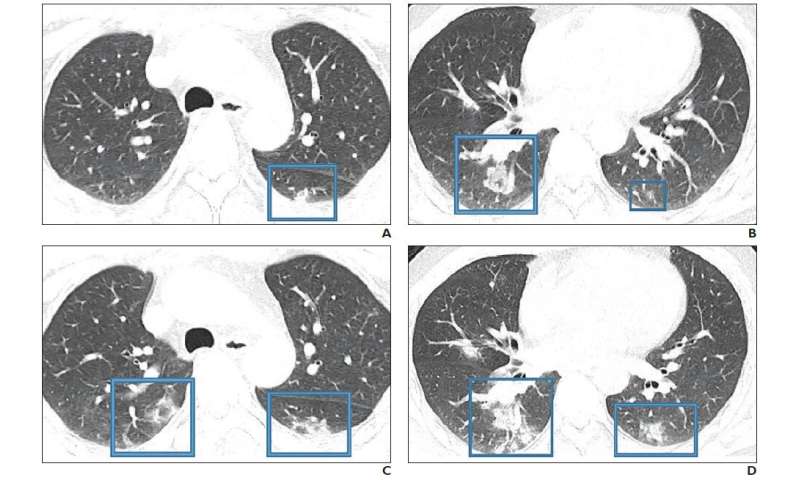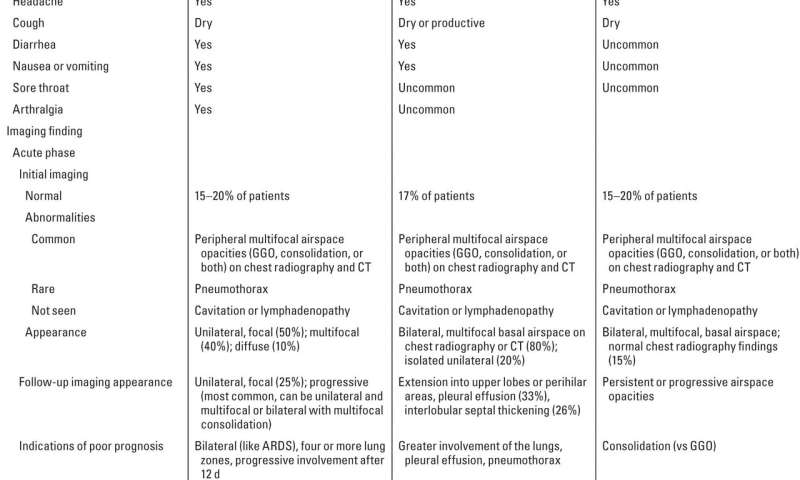
Although the imaging features of novel coronavirus disease 2019 (COVID-19) are variable and nonspecific, the findings reported thus far do show “significant overlap” with those of severe acute respiratory syndrome (SARS) and Middle East respiratory syndrome (MERS), according to an ahead-of-print article in the American Journal of Roentgenology (AJR).
COVID-19 is diagnosed on the presence of pneumonia symptoms (e.g., dry cough, fatigue, myalgia, fever, dyspnea), as well as recent travel to China or known exposure, and chest imaging plays a vital role in both assessment of disease extent and follow-up.
As per her review of the present clinical literature concerning COVID-19, Melina Hosseiny of the University of California at Los Angeles concluded: “Early evidence suggests that initial chest imaging will show abnormality in at least 85% of patients, with 75% of patients having bilateral lung involvement initially that most often manifests as subpleural and peripheral areas of ground-glass opacity and consolidation.”
Furthermore, “older age and progressive consolidation” may imply an overall poorer prognosis.
Unlike SARS and MERS—where initial chest imaging abnormalities are more frequently unilateral—COVID-19 is more likely to involve both lungs on initial imaging.
“To our knowledge,” Hosseiny et al. continued, “pleural effusion, cavitation, pulmonary nodules, and lymphadenopathy have not been reported in patients with COVID-19.”
Ultimately, the authors of this AJR article recommended CT for follow-up in patients recovering from COVID-19 to evaluate long-term or even permanent pulmonary damage, including fibrosis—as seen in SARS and MERS infections.

Source: Read Full Article